- Home
- William Shakespeare
The Oxford Shakespeare: The Complete Works Page 6
The Oxford Shakespeare: The Complete Works Read online
Page 6
Theatre is an endlessly fluid medium. Each performance of a play is unique, differing from others in pace, movement, gesture, audience response, and even—because of the fallibility of human memory—in the words spoken. It is likely too that in Shakespeare’s time, as in ours, changes in the texts of plays were consciously made to suit varying circumstances: the characteristics of particular actors, the place in which the play was performed, the anticipated reactions of his audience, and so on. The circumstances by which Shakespeare’s plays have been transmitted to us mean that it is impossible to recover exactly the form in which they stood either in his own original manuscripts or in those manuscripts, or transcripts of them, after they had been prepared for use in the theatre. Still less can we hope to pinpoint the words spoken in any particular performance. Nevertheless, it is in performance that the plays lived and had their being. Performance is the end to which they were created, and in this edition we have devoted our efforts to recovering and presenting texts of Shakespeare’s plays as they were acted in the London playhouses which stood at the centre of his professional life.
A USER’S GUIDE TO THE COMPLETE WORKS
Readers of this edition may find it helpful to have a note of some of its more distinctive features. Fuller discussion is to be found in the General Introduction, and in the Textual Companion (1987).
Contents
This volume includes all the writings believed by the editors to have been written, wholly or in part, by Shakespeare. Like all other editions, it also prints a few poems of uncertain authorship (see Various Poems, pp. 805-811). Information about reasons for inclusion and exclusion can be found in the Textual Companion, ‘The Canon and Chronology of Shakespeare’s Plays’, pp. 69-144).
Introductions
Each work is preceded by a brief introduction summarizing essential background information.
Order
The works are printed in conjectured order of composition as determined by the editors. The simplest way to find any given work is to refer to the Alphabetical List of Contents (pp. xi-xii). (Short poems are listed under the general title of ‘Various Poems’.)
The Words
Every new edition of Shakespeare differs to some extent from its predecessors. Because this edition represents a radical rethinking of the text, it departs from tradition more than most. New emendations of disputed readings have been introduced. At times we restore original readings that have traditionally been emended. Spelling and punctuation have been thoroughly reconsidered (see General Introduction, pp. xv-xlii). Our most radical departures from tradition relate to the plays that survive in more than one early text. In the belief that these texts are more likely to reflect unrevised and revised versions, rather than differently corrupted versions of a lost original (as has generally been supposed), we have abandoned the tradition of conflation. Passages surviving only in a text that we have not selected as our base text are printed not in the body of the play but as Additional Passages (as, for example, at the end of Hamlet). Most drastically, we present separately edited texts of both authoritative early editions of King Lear, using the titles under which they first appeared (The History of King Lear for the quarto text of 1608, and The Tragedy of King Lear for the Folio text). The only text in the volume printed from manuscript, Sir Thomas More, calls for individual treatment, which is discussed in the introduction to the play.
Stage Directions
Stage directions are based on those of the early editions, where they vary in amplitude and in style. They have been amended where necessary in order to signal requisite action. Changes are not automatically signalled. Special brackets (⌈ ⌉) indicate that the action signalled, its placing, or the identity of the speaker, is, in the editor’s opinion, open to question.
Act and Scene Divisions
None of Shakespeare’s plays printed in his lifetime is divided into acts and scenes, and the scattered divisions in the Folio have no certain claim to authenticity. Up to about 1609, plays appear to have been given with no act breaks. For convenience of reference we follow the standard practice of dividing the plays into five acts and the acts into scenes, on the principle that a new scene begins after the stage is cleared. We have rethought the traditional divisions, resulting in a few divergences from the norm.
In plays such as The Tempest, where the practice, dating from around 1609, of observing act breaks was followed, the break is signalled by a Tudor rose ().
For reasons explained elsewhere, Pericles, Edward III, Sir Thomas More, and The History of King Lear (based on the 1608 quarto) are divided only into scenes.
Titles
Titles have been rethought, so that for example the play printed in the Folio as The Famous History of the Life of King Henry the Eighth, and traditionally known as Henry VIII, is here given the title of All Is True, under which it was first acted. The Alphabetical List of Contents (pp. xi-xii) lists plays under traditional as well as rethought form.
THE LANGUAGE OF SHAKESPEARE
by DAVID CRYSTAL
ANY encounter with Shakespeare, on page or on stage, presents us with two related linguistic challenges:• a semantic challenge: we have to work out what his language means, if we are to follow the plots, understand the descriptions of people and places, and take in what he (in the poems) or his characters (in the plays) are saying and thinking,
• a pragmatic challenge: we have to appreciate the effects that his choice of language conveys, if we are to explain the style in which he or his characters talk, see why other characters react in the way they do, and understand what is happening to our intellect and emotions as we read, watch, or listen to their exchanges.
Most of the time we respond to these challenges with unselfconscious ease, because the language of Shakespeare is the same, or only minimally different, from the language we use today. We need no explanatory linguistic notes, or specialist dictionaries or grammars, to understand the semantics of such lines as: SIR JOHN Now, Hal, what time of day is it, lad?
(I Henry IV, 1.2.1)
ORSINO
If music be the food of love, play on.
(Twelfth Night, 1.1.1)
HAMLET
To be, or not to be; that is the question.
(Hamlet, 3.1.58)
The thought may be demanding upon occasion; but the language is no barrier.
Nor do we need a corresponding scholarly apparatus to appreciate the pragmatic force underlying such lines as: PRINCE HARRY [of Sir John] That villainous, abominable misleader of youth
(I Henry IV, 2.5.467)
MARINA
My name, sir, is Marina.
(Pericles, 21.131)
SHYLOCK [of a jewel] ... I had it of Leah when I was a bachelor.
(Merchant of Venice, 3.1.113)
If we refer to the context in which these lines occur, we find that they are, in turn, a jocular insult, a moment of revelation, and a nostalgic reflection; but we do not need to look up editorial notes to decide whether to laugh, cry, or sympathize as we take in what is said.
At the other extreme, there is Shakespearian language which is so far removed from our modern linguistic intuitions that without specialist help we are at a loss to know what to make of it, semantically or pragmatically. We have problems understanding what it means, or how we should react to it, or why it makes characters behave in the way they do: SIR JOHN [to Prince Harry] What a plague have I to do with a buff jerkin?
(I Henry IV, 1.2.45-6)
KENT [to Oswald . . . [you] lily-livered, action-taking, whoreson, glass-gazing, super-serviceable, finical rogue.
(The Tragedy of King Lear, 2.2.15-17).
SIR TOBY [to Sir Andrew, of challenging Cesario] ... If thou ‘thou’st’ him some thrice, it shall not be amiss.
(Twelfth Night, 3.2.42-3)
The general meaning and force of these three utterances is plain: the first is a jocular expostulation; the second is a savage character assault; the third is an incitement to be insulting. But if we do not hav
e a clear understanding of what the words mean or the impact they carry, we would be at a serious disadvantage if someone were to interrogate us on the point. Why should a buff jerkin upset Sir John? (We need to know they were worn by law officers.) How relevant an insult is finical? (The word meant ‘nit-picking’ or ‘over-fussy’ - a description, we might imagine, which a steward would find particularly irritating.) Why is thou such an asset in making a challenge? (Because courtiers would normally address each other as you, and their servants as thou; calling a fellow-courtier thou three times would be especially galling.) Difficulties of this kind have come about because of language change.
Shakespeare was writing in the middle of a period of English linguistic history called Early Modern English, which runs from around 1500 to around 1750. It was an age when the language was beginning to settle down after a turbulent few centuries when its structure radically altered from its Anglo-Saxon character. Old English (used until the twelfth century) is so different from Modern English that it has to be approached as we would a foreign language. Middle English (used until the fifteenth century) is very much more familiar to modern eyes and ears, but we still feel that a considerable linguistic distance separates us from those who wrote in it - Chaucer and his contemporaries. During the fifteenth century, a huge amount of change affected English pronunciation, spelling, grammar, and vocabulary, so that Shakespeare would have found Chaucer almost as difficult to read as we do. But between Jacobethan times and today the changes have been very limited. Although we must not underestimate the problems posed by such words as buff jerkin, finical, and thou, we must not exaggerate them either. Most of Early Modern English is the same as Modern English. The evidence lies in the fact that there are many lines of Shakespeare where we feel little or no linguistic distance at all: BRUTUS ... If there be any in this assembly, any dear
friend of Caesar’s, to him I say that Brutus’ love to
Caesar was no less than his. If then that friend
demand why Brutus rose against Caesar, this is my
answer: not that I loved Caesar less, but that I loved
Rome more. Had you rather Caesar were living,
and die all slaves, than that Caesar were dead, to
live all free men? As Caesar loved me, I weep for
him. As he was fortunate, I rejoice at it. As he was
valiant, I honour him. But as he was ambitious, I
slew him.
(Julius Caesar, 3.2.17-27)
That is why we call the period ‘Early Modern’ English rather than, say, ‘Late Middle’ English. The name suggests a closeness to the language of the present day.
Writing and speaking
The identity between Early Modern and Modern English can be illustrated from all areas of language structure - the writing system, the sound system, the grammar, the vocabulary, and the structure of the spoken or written discourse. However, it must be recognized that in the first two of these areas the identity is an artefact - the result of conventional editorial and performance practice. The Early Modern English system of spelling and punctuation is actually very different from that which we encounter in Modern English; but we would never guess from reading most editions. Just under half of the words in the First Folio have a spelling which is different from the one we know today. At the end of the sixteenth century the alphabet was still developing: the distinctions between u and v and between i and j were not fully established, so that we find vnuisited alongside vnvenerable and jigge alongside iigge. Conventions of word-spacing, hyphenation, sentence punctuation, and capitalization also displayed many differences from modern practice. And spelling was still extremely variable: about half the words which appear in the Folio appear in more than one version - some with half a dozen or more alternatives. Ancient, for example, appears as ancient, antient, aunchiant, aunchient, aunciant, auncient, and auntient. Spelling did not achieve its modern standardization until the end of the eighteenth century - but most editors silently modernize Folio and Quarto spelling and punctuation, with the aim of making the texts more accessible to the reader.
Nor would we ever guess, from the way in which the poems are read aloud and the plays performed, that the Early Modern English sound system (the vowels and consonants, the stress and intonation) was at a considerable remove from modern pronunciation. It is an area where precise conclusions are unattainable. Attempts to reconstruct the way people spoke, based on a study of rhythmical patterns, rhymes, spellings, and contemporary phonetic descriptions can take us so far, but leave us well short of the character of the original. From the nature of the rhythm of the poetic line (the metre), for example, we can deduce that a syllable needs separate articulation, as in the opening lines of Henry V:O for a muse of fire, that would ascend
The brightest heaven of invention.
It has to be: ‘in-ven-see-on’. Similarly, it is the metre which motivates contrasting pronunciations of the same word in such cases as ‘Hence banished is banished from the world’ (Romeo and Juliet, 3.3.19). And from the way in which words rhyme or pun, we can deduce an earlier pronunciation, as when wind is made to rhyme with unkind.
But rhymes and puns do not tell us the whole story. They tell us only that two words must have sounded the same; they do not tell us in what respects that ‘sameness’ exists. In many cases, we can clearly see a pun, but still be unclear how to pronounce it. When Cassius says (Julius Caesar, 1.2.157-8): Now is it Rome indeed, and room enough
When there is in it but one only man
there is obviously some word-play intended - but is Rome being pronounced like modern room, or should room be like modern Rome, or was the Early Modern English pronunciation somewhere in between? Modern performances in ‘original voices’, based on research by historical linguists, are probably not too far away from the truth - at least, as far as the vowels, consonants, and word-stress contrasts are concerned; but there remain many uncertain areas. And the nature of the dynamic aspects of speech at the time (the intonation and tone of voice) is a matter of speculation. No modern accent corresponds, though the fact that the r was pronounced after vowels (as in fire) does tend to remind people of modern rural West of England accents, when they hear people attempt a Shakespearian pronunciation. Then, as now, there would have been many regional and class variations in accent, especially in the London area.
Despite their limitations, the reconstruction of the Early Modern English sound system indicates that pronunciation norms have changed greatly in the past four hundred years. Modern performances and readings, though, almost always introduce present-day sounds without comment, allowing only for cases where an earlier pronunciation is needed to satisfy the needs of the metre or to convey the effect of a pun. So the situation with speaking is very similar to that with writing: most modern readers and playgoers remain unaware of the extent of the difference. And this is why, when people discuss the distinctive language of Shakespeare, the main topics are usually restricted to the three areas of language that are present in both: grammar, vocabulary, and discourse conventions. In each case, the number of differences between Early Modern English and Modern English is relatively small, but several of the points of difference turn up very frequently - which is the chief reason that people think Shakespeare’s language is more different from Modern English than in fact it is.
Grammar
The grammatical rules of the language have little changed during the past four centuries: some 90 per cent of the word orders and word formations used by Shakespeare are still in use today. A grammatical parsing of the prose extract from Julius Caesar above would bring to light nearly two hundred points of sentence, clause, phrase, and word structure, but there is only one construction which is noticeably different from Modern English: ‘Had you rather Caesar were living’. Today we would have to say something like: ‘Would you rather have Caesar living’. A less significant difference, in that passage, is the use of the subjunctive (as in If there be any in this assembly), which is unusual in British
(though not American) English today. But apart from this, and allowing for the rather formal rhetorical style, the other grammatical usages in the extract are the same as those we would use now.
There is nonetheless a widespread impression that Shakespeare’s grammar is very different from what we find today. The impression arises for two reasons: because of the way grammar operates within discourse, and because of the influence of metrical constraints.
GRAMMAR IN DISCOURSE
Grammar is different from vocabulary in the way it appears in connected speech or writing. An individual word may not be present in a particular speech - or even in a whole scene - but core grammatical features are repeatedly used. Each page of this essay will provide many examples of the definite article, forms of the verb to be, plural endings, conjunctions such as and, and other essential features of sentence construction. In the same way, Shakespearian grammar repeatedly uses several Early Modern English features, such as older pronouns (thou, ye), inflectional endings (-est, -eth), and contracted forms (is’t, on’t). It is the frequency of use of such forms which can give a grammatical colouring to a speech - often, out of all proportion to their linguistic significance, as in this extract from Hamlet (5.1.271-5):HAMLET (to Laertes) Swounds, show me what

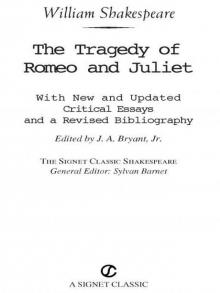 Romeo and Juliet
Romeo and Juliet As You Like It (Folger Shakespeare Library)
As You Like It (Folger Shakespeare Library)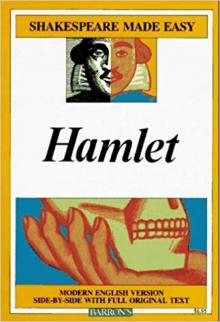 Hamlet
Hamlet Richard II (Folger Shakespeare Library)
Richard II (Folger Shakespeare Library)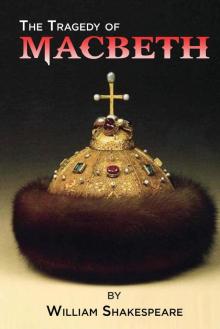 Macbeth
Macbeth Henry V
Henry V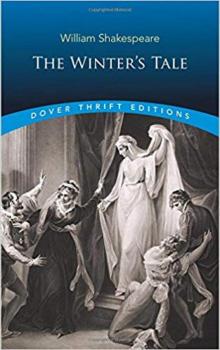 The Winter's Tale
The Winter's Tale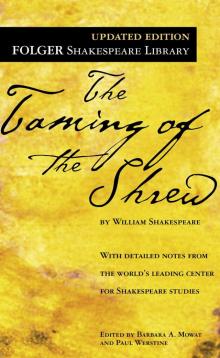 The Taming of the Shrew
The Taming of the Shrew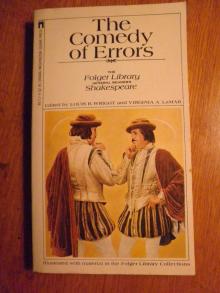 The Comedy of Errors
The Comedy of Errors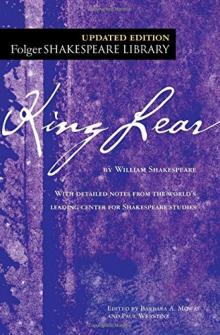 King Lear (Folger Shakespeare Library)
King Lear (Folger Shakespeare Library)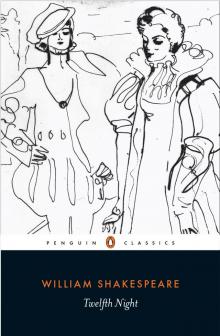 Twelfth Night
Twelfth Night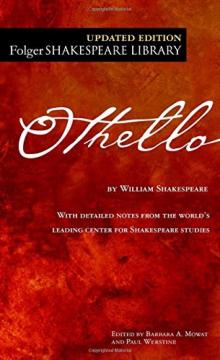 Othello
Othello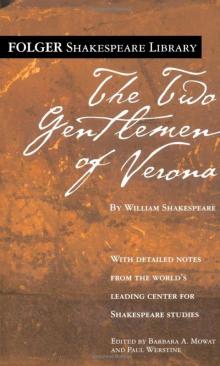 The Two Gentlemen of Verona
The Two Gentlemen of Verona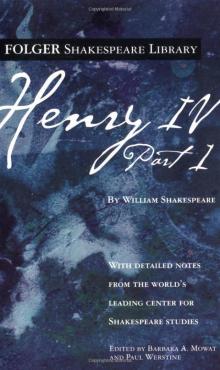 Henry IV, Part 1 (Folger Shakespeare Library)
Henry IV, Part 1 (Folger Shakespeare Library) King John/Henry VIII (Signet Classics)
King John/Henry VIII (Signet Classics)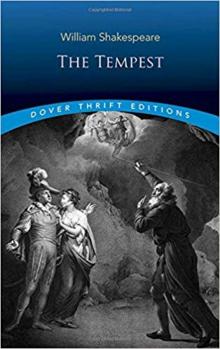 The Tempest
The Tempest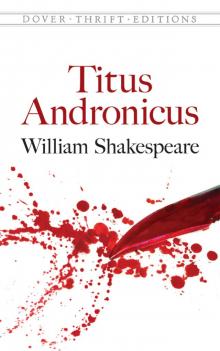 Titus Andronicus (Dover Publications)
Titus Andronicus (Dover Publications)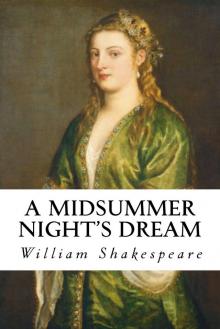 A Midsummer Night's Dream
A Midsummer Night's Dream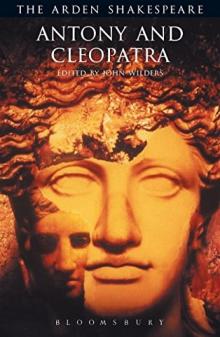 Antony and Cleopatra (Arden Shakespeare: Third Series)
Antony and Cleopatra (Arden Shakespeare: Third Series)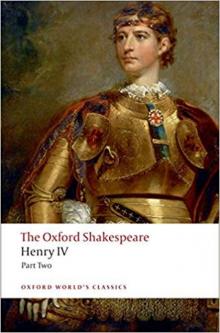 The Oxford Shakespeare: Henry IV, Part 2 (Oxford World's Classics)
The Oxford Shakespeare: Henry IV, Part 2 (Oxford World's Classics)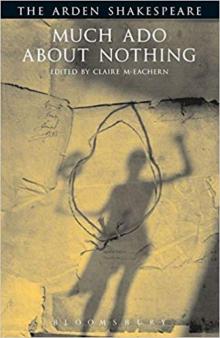 Much Ado About Nothing (Arden Shakespeare: Third Series)
Much Ado About Nothing (Arden Shakespeare: Third Series)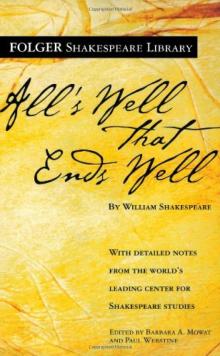 All's Well That Ends Well
All's Well That Ends Well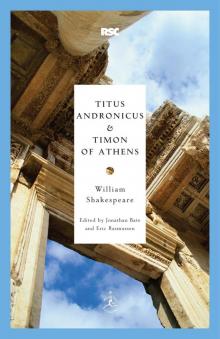 Titus Andronicus & Timon of Athens
Titus Andronicus & Timon of Athens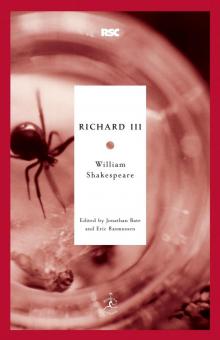 Richard III (Modern Library Classics)
Richard III (Modern Library Classics) Coriolanus
Coriolanus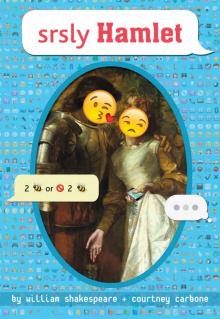 srsly Hamlet (OMG Shakespeare)
srsly Hamlet (OMG Shakespeare) The Merchant of Venice
The Merchant of Venice Richard III
Richard III Richard II
Richard II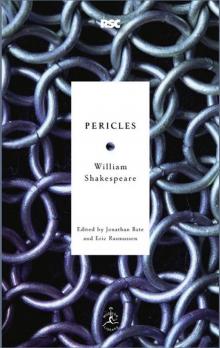 Pericles
Pericles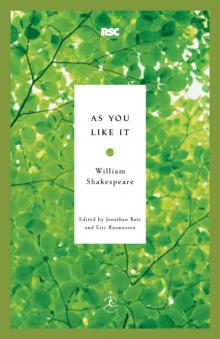 As You Like It
As You Like It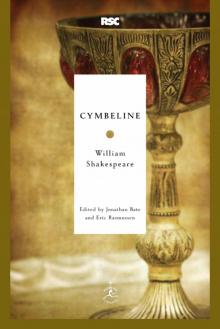 Cymbeline
Cymbeline Alls Wel that ends Well
Alls Wel that ends Well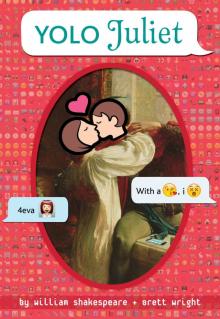 YOLO Juliet
YOLO Juliet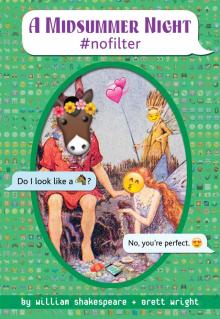 A Midsummer Night #nofilter
A Midsummer Night #nofilter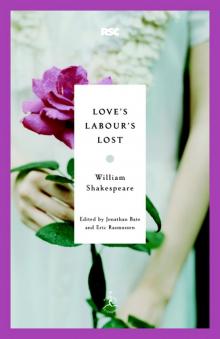 Love's Labour's Lost
Love's Labour's Lost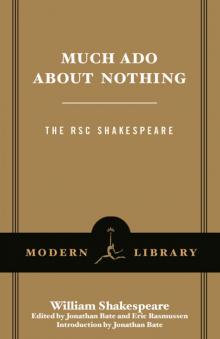 Much Ado About Nothing
Much Ado About Nothing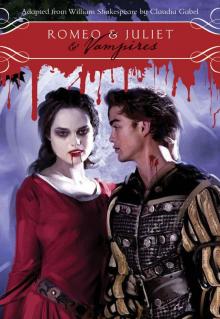 Romeo & Juliet & Vampires
Romeo & Juliet & Vampires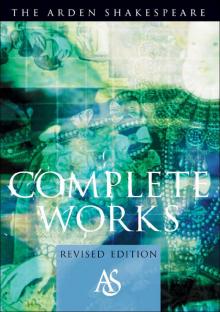 The Arden Shakespeare Complete Works
The Arden Shakespeare Complete Works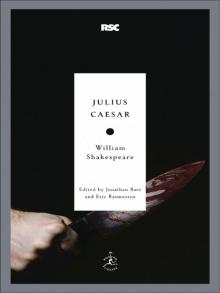 Julius Caesar
Julius Caesar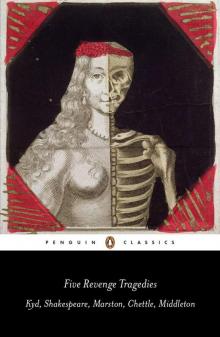 Five Revenge Tragedies: The Spanish Tragedy, Hamlet, Antonio's Revenge, The Tragedy of Hoffman, The Revenger's Tragedy (Penguin Classics)
Five Revenge Tragedies: The Spanish Tragedy, Hamlet, Antonio's Revenge, The Tragedy of Hoffman, The Revenger's Tragedy (Penguin Classics)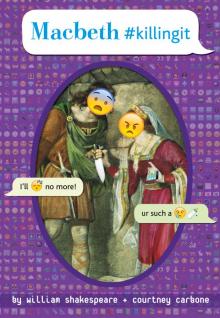 Macbeth #killingit
Macbeth #killingit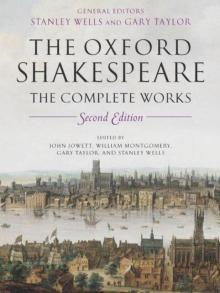 The Oxford Shakespeare: The Complete Works
The Oxford Shakespeare: The Complete Works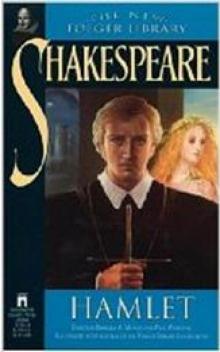 Hamlet, Prince of Denmark (Collins edition)
Hamlet, Prince of Denmark (Collins edition)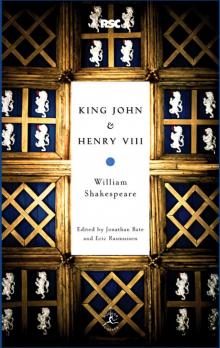 King John & Henry VIII
King John & Henry VIII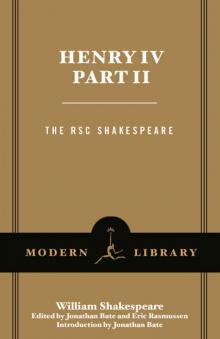 Henry IV, Part 2
Henry IV, Part 2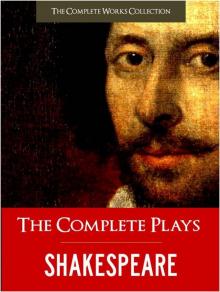 Complete Plays, The
Complete Plays, The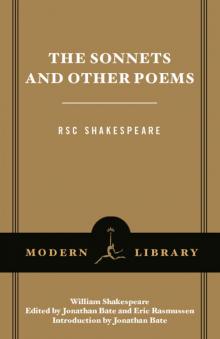 The Sonnets and Other Poems
The Sonnets and Other Poems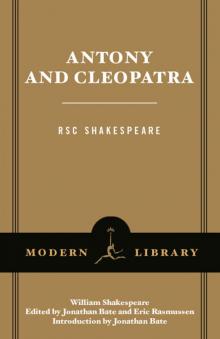 Antony and Cleopatra
Antony and Cleopatra Henry IV, Part 1
Henry IV, Part 1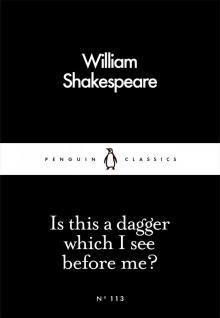 Is This a Dagger Which I See Before Me?
Is This a Dagger Which I See Before Me? The Complete Works of William Shakespeare In Plain and Simple English (Translated)
The Complete Works of William Shakespeare In Plain and Simple English (Translated)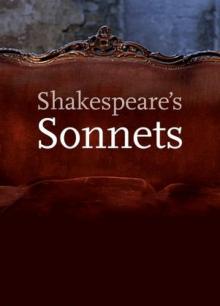 The Sonnets
The Sonnets